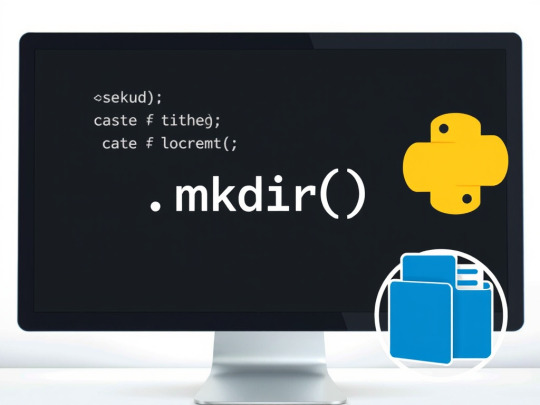Don't wanna be here? Send us removal request.
Text
Difference between List Set
Lists: Ordered: Lists maintain the order in which elements are added. Mutable: You can change the contents of a list after it’s created (add, remove, or modify elements). Allow Duplicates: Lists can contain duplicate elements. Defined with []: You create a list using square brackets, like this: myList = ['a', 'b', 'c']. Sets: Unordered: Sets don’t preserve the order of elements. The order…

View On WordPress
1 note
·
View note
Text
Python : .mkdir()
The .mkdir() method is part of the pathlib module in Python. Why not os.mkdir()? You are familiar with os.mkdir() from the os module, which also creates directories. Although it serves a similar purpose, pathlib is often preferred. Its approach to file system operations is more intuitive and object-oriented. .mkdir(): This is a method of the Path object. It’s used to create a new directory at…

View On WordPress
1 note
·
View note
Text
Excel - Offset and match
Right combination to lookup values Mastering Excel’s OFFSET function in tandem with MATCH can unlock dynamic data manipulation like a pro! Why Use This Combo? Dynamic Retrieval: If your data updates or expands, the formula adapts without manual adjustment. Versatility: Works for vertical and horizontal data, and even two-dimensional searches. Imagine your spreadsheet as a city grid. The…
1 note
·
View note
Text
NumPy : Reshape
NumPy Reshape function is used to change the shape of an array. It gives a new shape to an array without changing its data. How Reshaping Happens : The reshaping process includes two steps: As a first step the array is unroll to form a straight line. Later, in second step the array is roll back up into the new required shape. Why we do Reshaping : Using NumPy reshape helps us…

View On WordPress
0 notes
Text
max-pooling layers in convolutional neural networks (CNNs)
Let’s dive into max-pooling layers in convolutional neural networks (CNNs). What Is Max Pooling? Max pooling is an operation commonly used in CNNs following individual convolutional layers. It helps reduce the dimensionality of feature maps while retaining essential information.
View On WordPress
0 notes
Text
XGBoost -- An Introduction
About XGBoost is an algorithm that has recently been dominating applied machine learning for structured or tabular data. XGBoost stands for extreme gradient boosting, developed by Tianqi Chen. Since its introduction in 2014, XGBoost has quickly become among the most popular methods used for classification in machine learning. XGBoost is an implementation of gradient-boosted decision trees…

View On WordPress
0 notes
Text
DECISION TREE II: Steps In Decision Tree
My New Post - Steps In Decision Trees
Step 1: Data Preparation Step 1: Data Preparation Decision trees require a labelled dataset, where the input features (X) and corresponding labels (Y) are known. The dataset is divided into two parts: a training set and a test set. The training set is used to build the decision tree, and the test set is used to evaluate its performance. Step 2: Selecting the Root Node The first step in…

View On WordPress
0 notes